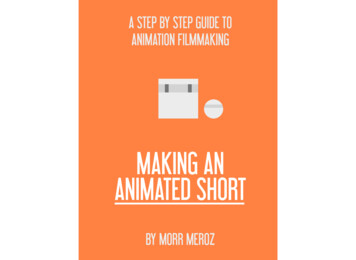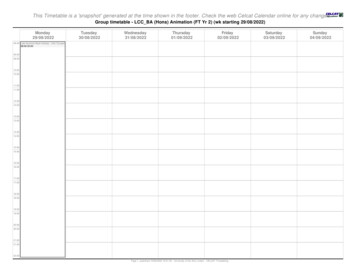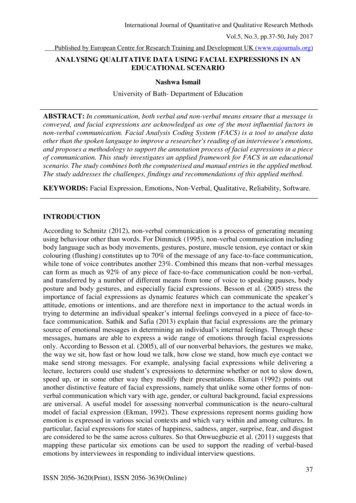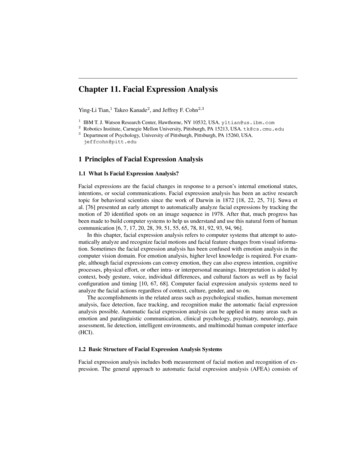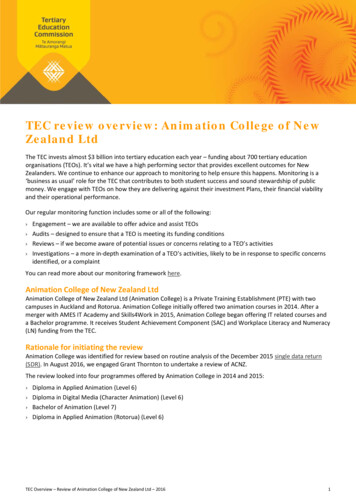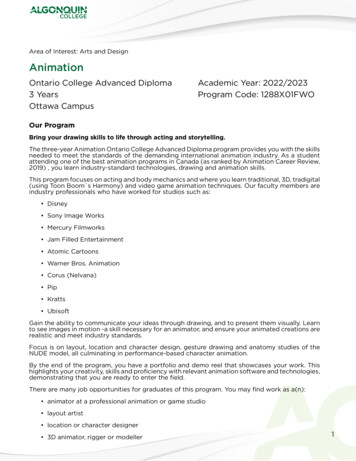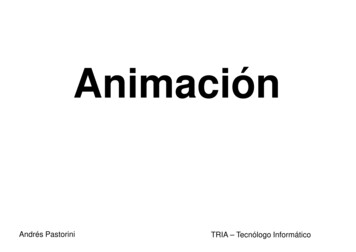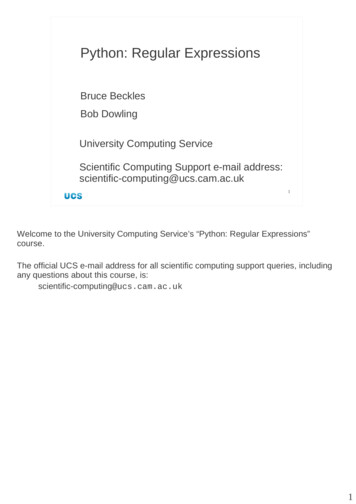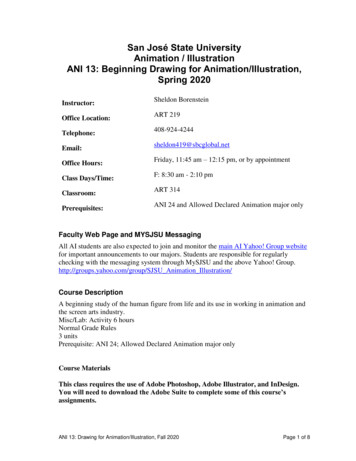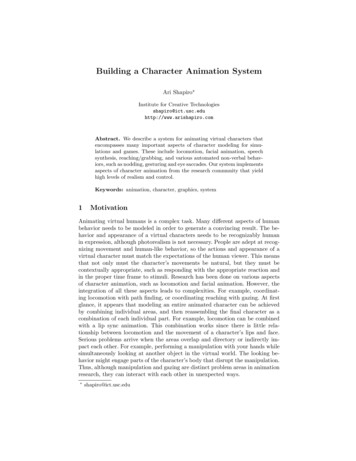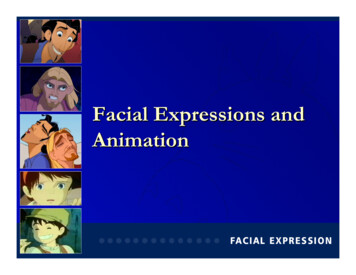
Transcription
Facial Expressions andAnimation
Facial Expressions and Animation Theory behind Facial Expressions Execution in Animation Prof. Paul EkmanzUniversality in Facial Expressions?
Facial Expressions and Animation
Facial Expressions and Animation
Paul Ekman Professor of PsychologyExpert in facial expression recognitionEmotions Revealed (2003)Categorizingdifferent emotions
Paul Ekman Nurture vs NatureAre facial expressions universallyrecognizable?Ekman’s proofzzBlind peopleIndigenous cultures
Facial Action Coding System Method for measuring and describing facial behaviorszzzBy Paul Ekman and W.V. Friesen in the 1970sDetermining how the contraction of each facial muscle(singly and in combination with other muscles) changesthe appearance of the faceIdentifying the specific changes that occurred withmuscular contractions and how best to differentiate onefrom another Goal: To create a reliable means for skilled humanscorers to determine the category or categories inwhich to fit each facial behavior FACS scores are descriptive only, and provide noimplications about the meaning of the behavior
FACS Categories and ActionsOriginal Action Units – Part 1Original Action Units – Part 2Original Action Units – Part 3Original Action Units - Part 4Original Action Units – Part 5
Categories of Facial Expressions Facial Expression Categories:zzzzz Sadness and agonyAngerSurprise and FearDisgust and ContemptHappiness“No single facial expression can be relied upon alwaysto be present when an emotion is felt”
Sadness and Agony Often invokes similar feelings of sadnessRarely voluntaryHard to mimicConsists of acombination ofconflicting actions
Recognizing Sadness Mouthzzz Corner of lips pulled downRaised cheeksPossibly dropped jaw (for agony and crying)EyeszzUpper eyelids dropInner corners of eyebrows raised and broughttogether
Sadness
Anger Unlike sadness:zzLooking at anger does not invoke itEasier to mimic
Recognizing Anger Jaw tightly clenchedIf teeth exposed, mouth has rectangularshapeThinning of lipszz Subtle but frequentEarliest signLower jaw can be forward
Recognizing Anger
Recognizing Anger Glaring eyeszz Muscle of difficultyzz Raised upper eyelidsPossibly tensed lower eye lidsTighten up area around eyesMental and physical difficulty cause it to contractEyebrows lowered and brought together
Anger
Surprise and Fear Fear has been studied more than any otheremotionHard to distinguish the surprise and fearSurprise is a temporary expression, whichoften converts into other expressions
Recognizing Fear Eyeszzzz Upper eyelids raised as high as possibleTensed lower eyelidsEyebrows raised and slightly closer togetherEyes staring straight aheadMouthzzLips stretched horizontallyPossibly dropped jaw
Surprise and Fear
Disgust and Contempt Subtly different from angerRarely photographed in comparison to theother emotionsPaul RozinInterpersonal triggers:Strange, deceased,misfortunate, morally taintedz
Recognizing Disgust and Contempt Active muscles around noseEyes can be relaxed comparatively to angerCan be limited to one side of the facez Feeling of imbalanceLowered eyebrowsRaised upper lipCombinations:zzDisgust and angerContempt and smile
Disgust and Contempt
Happiness More general termz Describes a state of mindEmotions invoked differ from all the otherfacial expression categories16 Categories of enjoyable emotions
Recognizing Happiness Duchenne Smilezz Orbicularis oculiCan not be voluntaryFake smiles
Happiness
Cross-Cultural Facial Expression Cüceloglu’s experiment (1970)zzz60 line drawings of facial elementsShowed to students in US, Japan and TurkeyConcluded that facial codes are common to differentcultures
Universality of Facial Expressions Ekman and Friesen’s experiment (1971)zzzOver 3000 still photographsShowed to 4 different language groupsProved that facial expressions are universal
Sadness in Animation Upper eyelids dropInner corners of eyebrowsraised and broughttogetherRaised cheeks
Anger in Animation Jaw tightly clenchedIf teeth exposed, mouthhas rectangular shapeGlaring eyesRaising of upper eyelidEyebrows lowered andbrought together
Fear in Animation Upper eyelids raised ashigh as possibleTensed lower eyelidsStretch lips horizontallyDropped jawEyebrows raised and closetogether
Disgust in Animation Active muscles aroundnoseEyes can be relaxedCan be limited to one sideof the face
Happiness in Animation Most frequently observedin animations Fake smiles
Animating Facial Expressions Anthropomorphism
Animating Facial Expressions Voice as preprocessor post-process?Exaggeration in facial features
Facial Action Coding System Method for measuring and describing facial behaviors zBy Paul Ekman and W.V. Friesen in the 1970s zDetermining how the contraction of each facial muscle (singly and in combination with other muscles) changes the appearance of the face zIdentifying the specific changes that occurred with muscular contractions and how best to differentiate one
